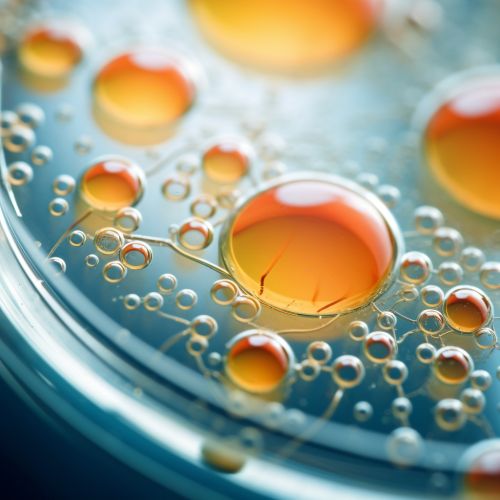Staphylococcus aureus
Overview
Staphylococcus aureus is a gram-positive, round-shaped bacterium that is a member of the Firmicutes, and it is a usual member of the microbiota of the body, frequently found in the upper respiratory tract and on the skin. It is often positive for catalase and nitrate reduction and is a facultative anaerobe that can grow without the need for oxygen. Although S. aureus usually acts as a commensal of the human microbiota it can also become an opportunistic pathogen, being a common cause of skin infections including abscesses, respiratory infections such as sinusitis, and food poisoning.


Characteristics
S. aureus is a spherical bacterium, arranged in grape-like clusters, and measures approximately 0.5 to 1.5 micrometers in diameter. It is non-motile and does not form spores. It is capable of growing at a wide range of temperatures, from 15 to 45 degrees Celsius, and at a pH level as low as 4.2. It can survive at high salt concentrations, up to 15% NaCl.
Pathogenesis
The pathogenesis of S. aureus involves a combination of bacterial immuno-evasive strategies, and the ability to form biofilms. Biofilm formation allows the bacteria to adhere to surfaces, such as medical implants, and to resist phagocytosis and antibiotics. S. aureus can cause a wide range of diseases, from minor skin infections to life-threatening diseases such as pneumonia, meningitis, osteomyelitis, endocarditis, toxic shock syndrome (TSS), and sepsis. It is still one of the five most common causes of hospital-acquired infections and is often the cause of postsurgical wound infections.
Treatment
Treatment of S. aureus infection involves the use of antibiotics. However, the emergence of antibiotic-resistant strains, such as methicillin-resistant Staphylococcus aureus (MRSA), has made treatment more challenging. Other treatment strategies include the use of bacteriophage therapy, vaccines, and probiotics.
Prevention
Prevention of S. aureus infection can be achieved through good hygiene practices, such as regular hand washing, and through the use of personal protective equipment in healthcare settings. Vaccines against S. aureus are currently under development but are not yet available for clinical use.
